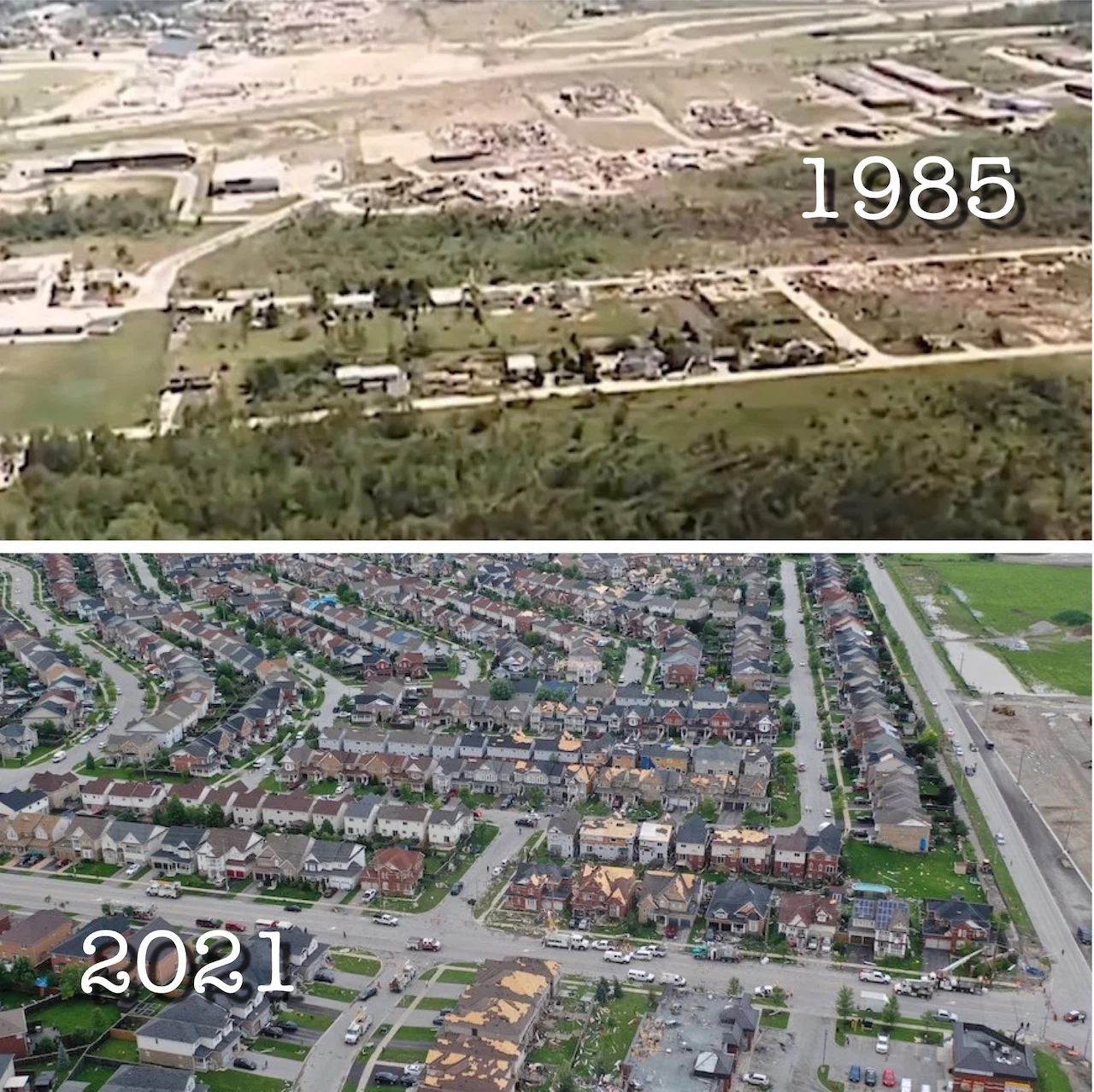
Barrie, Ont., tornado brings flashbacks of infamous Black Friday
While the May 31, 1985 tornado was more powerful, the July 15 twister certainly was impactful enough to have stirred up recollections of the deadly disaster that occurred in Barrie, Ont., 36 years ago.
Thursday's tornado in Barrie, Ont., was significant enough to cause damage and injuries, perhaps also spinning up memories from the Black Friday twister in 1985.
While the May 31, 1985 tornado was more powerful, the July 15 twister certainly was impactful enough to have stirred up recollections of the deadly disaster that occurred in Barrie more than 36 years ago.
SEE ALSO: Black Friday 1985: Remembering one of Canada's biggest tornado outbreaks
We take a look at both tornadoes and the impacts they had, and examine the conditional setups between them, explaining how they were different, yet destructive.
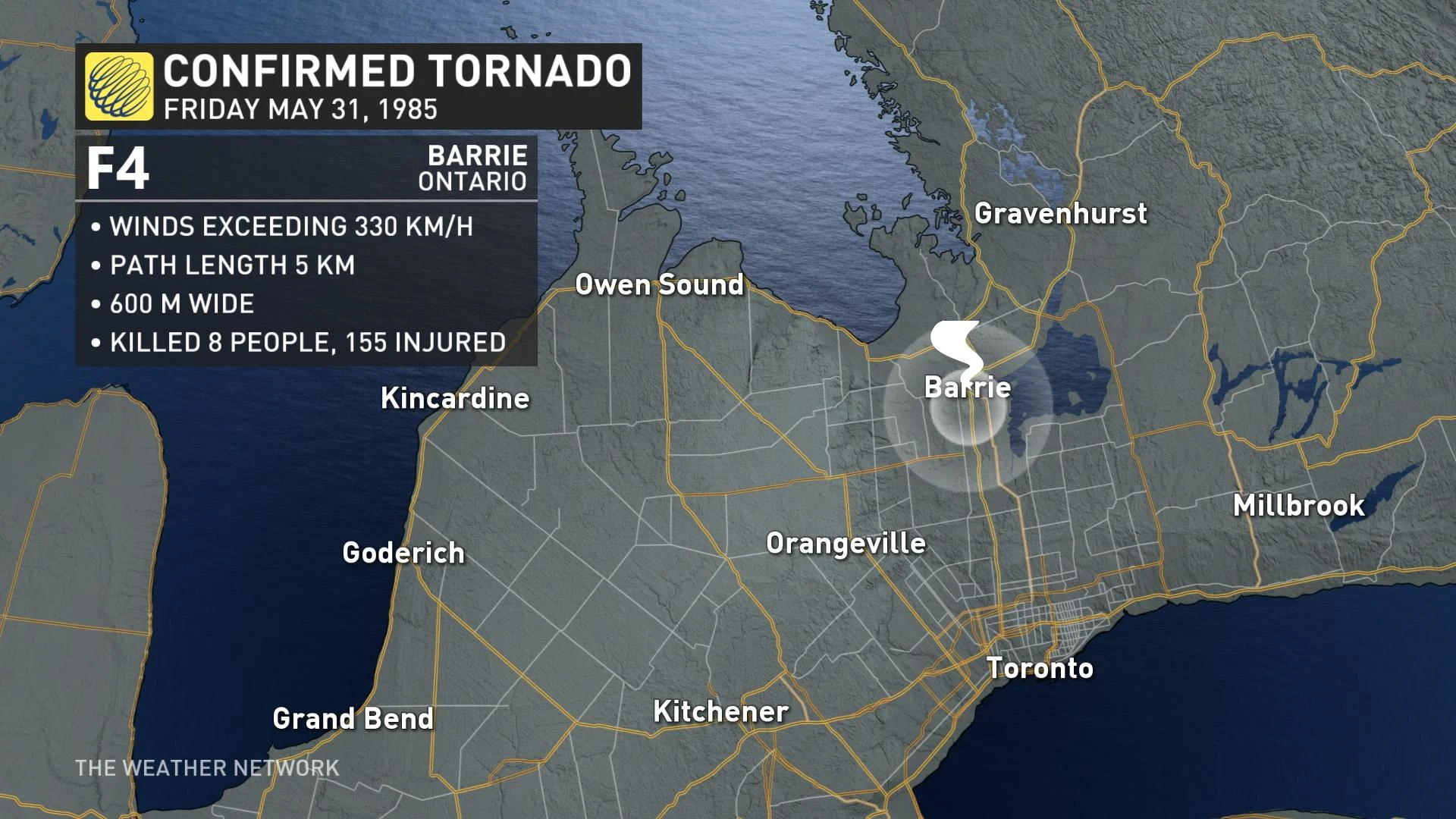
JULY 15, 2021 TORNADO
On Thursday, July 15, multiple severe thunderstorms exploded and swept through the southern half of the province. This prompted multiple tornado warnings including for the Barrie area. At around 2:30 p.m. EDT, a tornado spawned from the storm trekked through the southern neighbourhoods of Barrie.
"Just after 2:30 p.m. Thursday, a tornado tracked from the miniature golf course on Huronia Road and Mapleview Drive (in south Barrie) and continued eastward towards Prince William Way where it caused significant damage on the north side of Mapleview Drive," Environment and Climate Change Canada (ECCC) said in its summary.
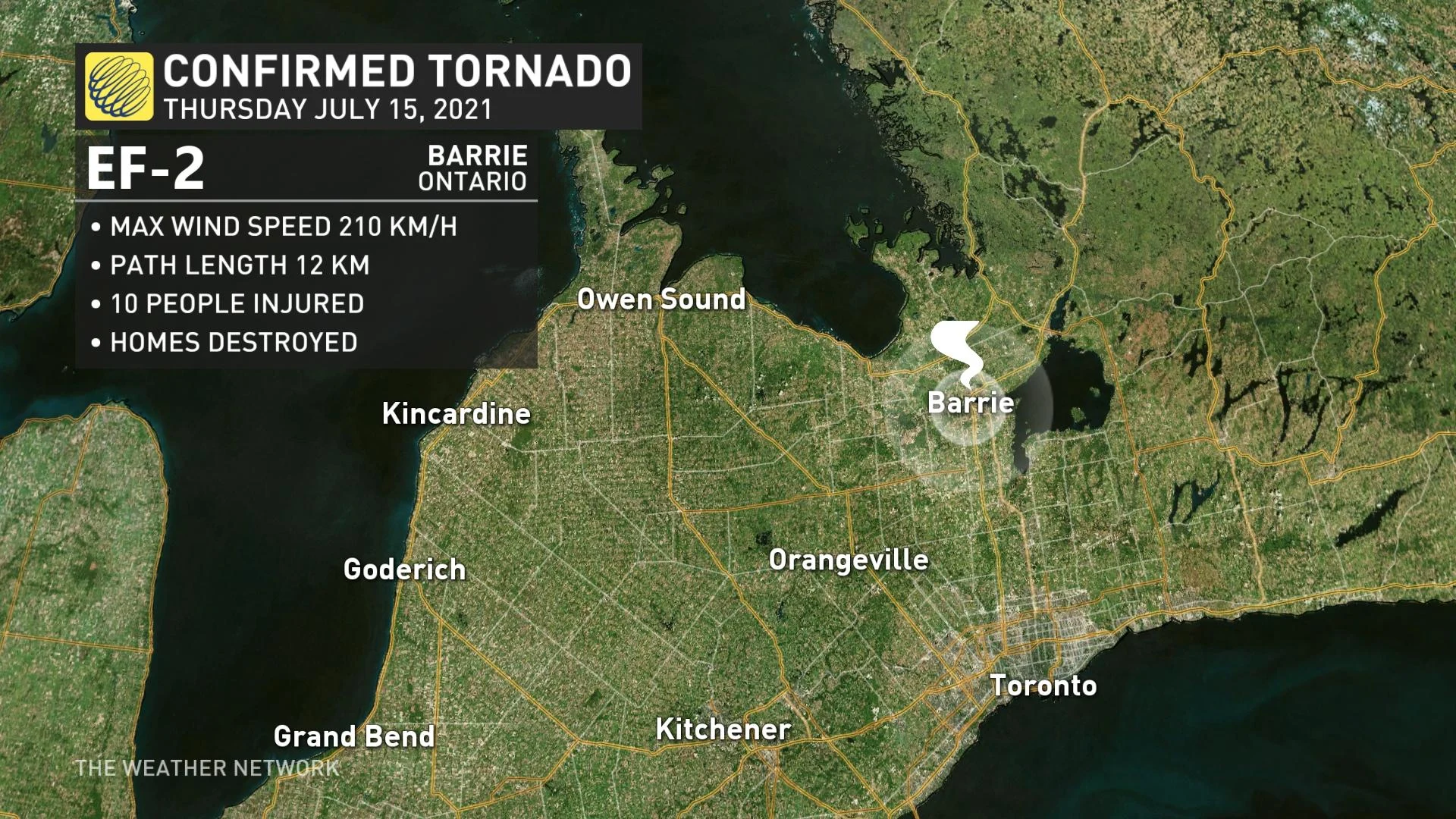
The twister damaged about 150 homes, 71 deemed unsafe to enter, according to city of Barrie officials. The twister also resulted in 10 injuries, a tally that increased after paramedics had initially put the figure at eight Thursday. All but two had been released as of Friday afternoon.
After surveying the damage, ECCC and the Northern Tornadoes Project (NTP) gave the Barrie tornado a preliminary EF-2 on the Enhanced Fujita scale. It had maximum wind speeds of 210 km/h, with a damage path that was 12 km long and up to 600 metres wide.
The agency also noted trees were uprooted or toppled, and at least 10 roofs were removed. The second floor was destroyed or removed from two houses and a couple of vehicles were overturned. Roof shingles were damaged or removed from a number of other homes along the damage track from the tornado. The damage track may have continued towards Friday Harbour and over Lake Simcoe.
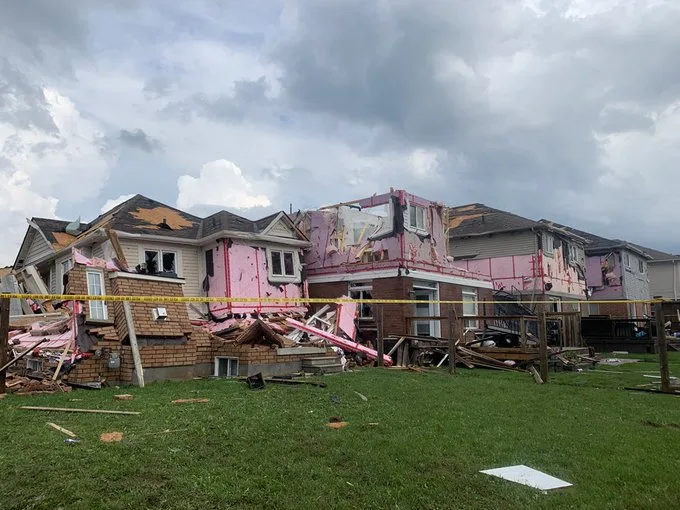
(Mark Robinson)
Ontario Premier Doug Ford visited the afflicted area Friday, and said the province would step in to cover costs for residents whose insurance would not pay.
RECALLING BLACK FRIDAY ON MAY 31, 1985
The 1985 Barrie, Ont., tornado that occurred on Friday, May 31 was part of a larger outbreak that saw powerful thunderstorms spawn 14 twisters in the southern part of Ontario, killing 16 people. Hundreds more were injured and several thousand were left homeless. Because of this, it was given the Black Friday moniker.
Barrie suffered the biggest loss from the event, as the strongest twister -- F4-rated -- swept through the city and killed eight people, injuring 155 others. The tornado uprooted trees, tossed cars, demolished factories and homes before dissipating over Lake Simcoe. With wind speeds exceeding 330 km/h, the twister left behind a 5-kilometre-long damage path, up to 600 metres wide, within the city boundary.
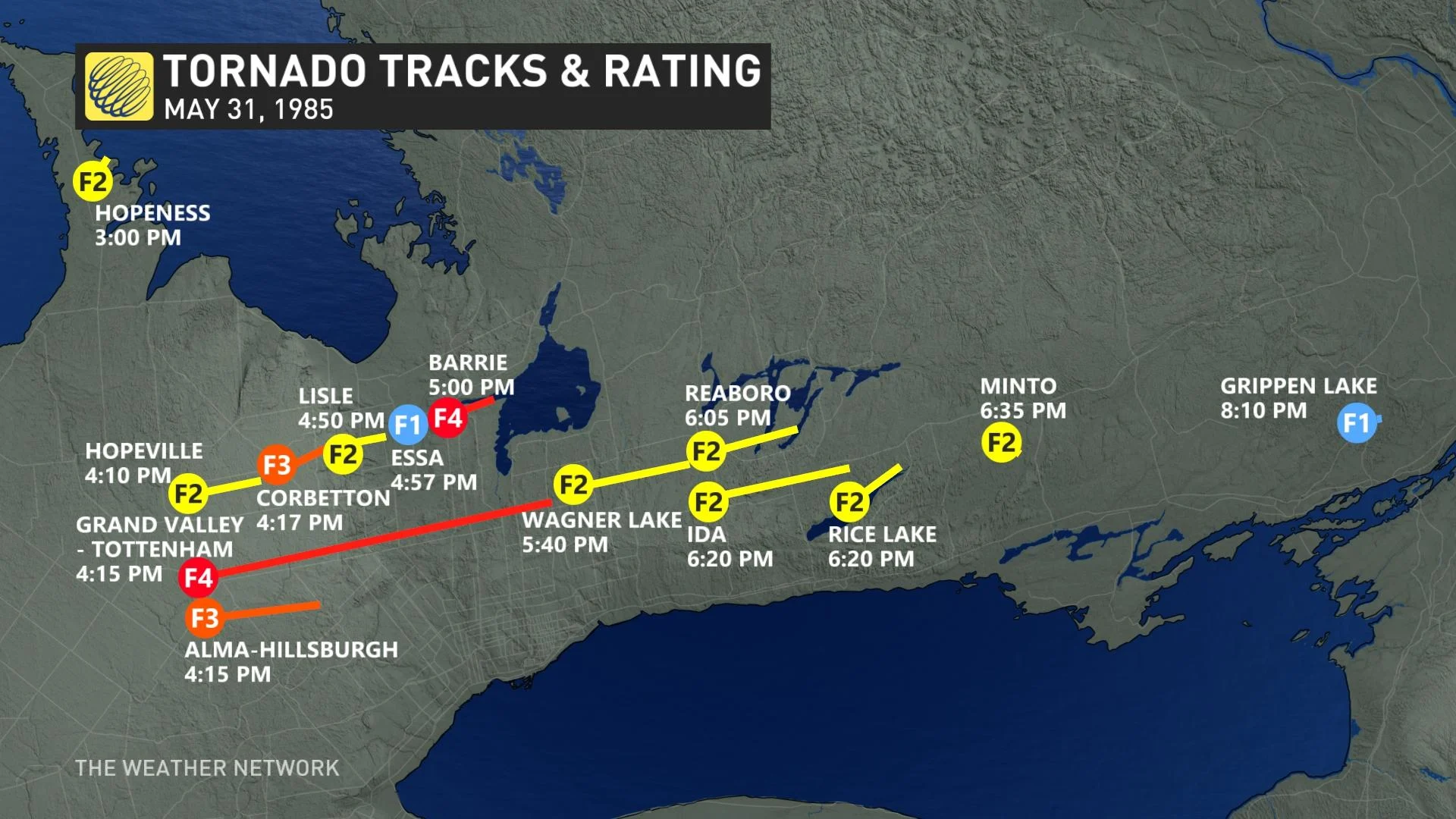
This is how Barrie's deadly tornado unfolded. In the late-afternoon, a previous tornado in the area knocked out a hydro transformer, causing a blackout in Barrie at around 4 p.m. Because of this, people were sent home early from work.
The twister that formed near Barrie picked up steam and started snapping and destroying trees. The tornado's damage path was approximately 600 metres wide at this point.
Just before 5 p.m., the tornado crossed into southern Barrie. It took out a square block of homes on Crawford Street and Patterson Road, killing five people. The tornado then travelled to the Molson Park industrial area, where one person died. Then the twister crossed Highway 400, where it damaged many buildings including farms. A man died when the tornado pulled him from his car.
The tornado's path narrowed to around 300 metres as it continued to wreck homes in the area. It continued its path, killing a boy on his bike in the Tollendal Woods and Minets Point area.
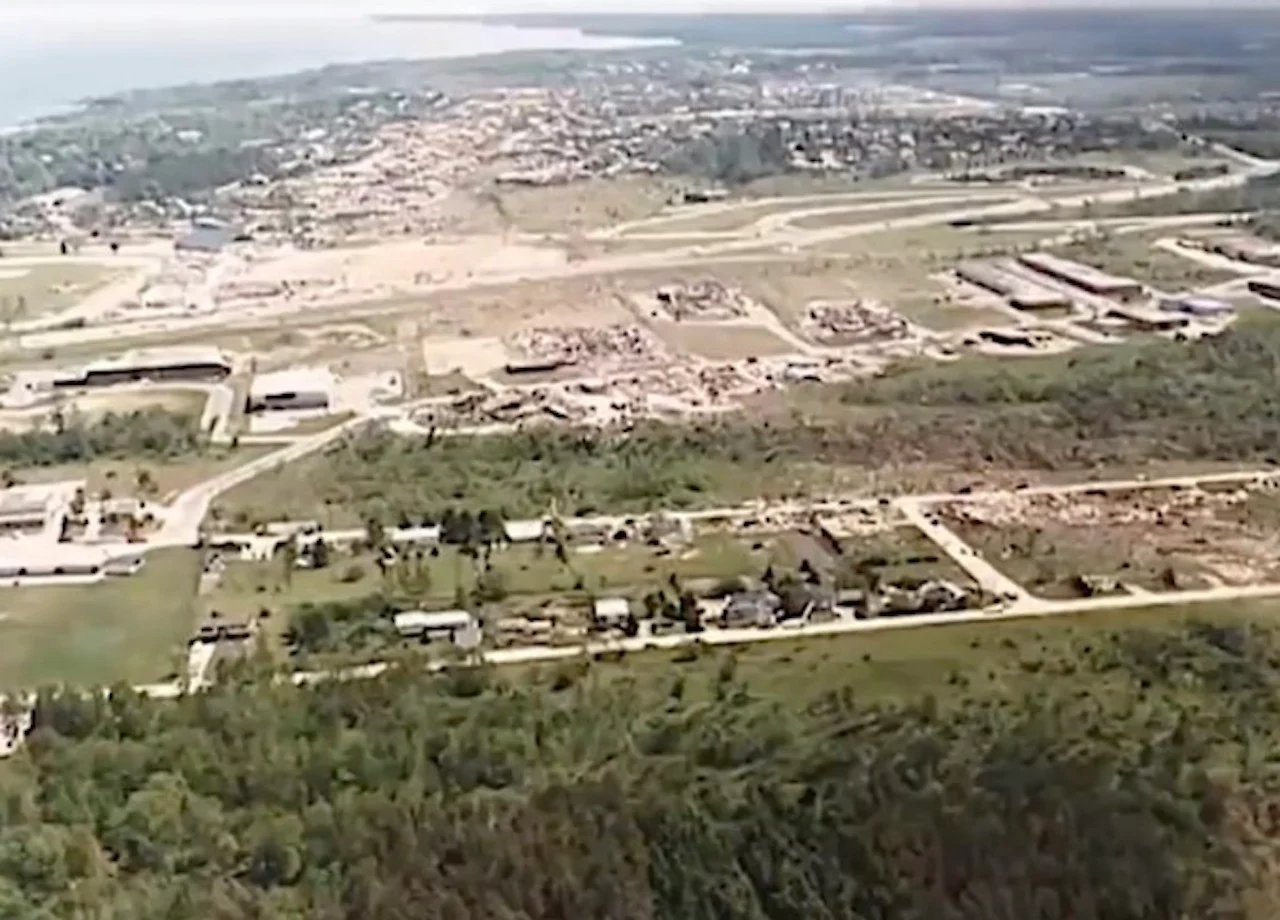
(Barrie police)
The tornado damaged or destroyed homes, cars and boats before it briefly turned into a waterspout over Kempenfelt Bay and dissipated.
COMPARING THE 1985 AND 2021 SETUPS
According to Brad Rousseau, a meteorologist at The Weather Network, the overall atmospheric environment in 1985 was "much more volatile" than what was seen on Thursday.
"In 1985, there was a deep upper level trough and strong sfc [surface] low tracking through the Great Lakes basin. This allowed for a lot more instability and wind shear to push in across the area, which led to a much stronger thunderstorm and tornado [threat]," said Rousseau.
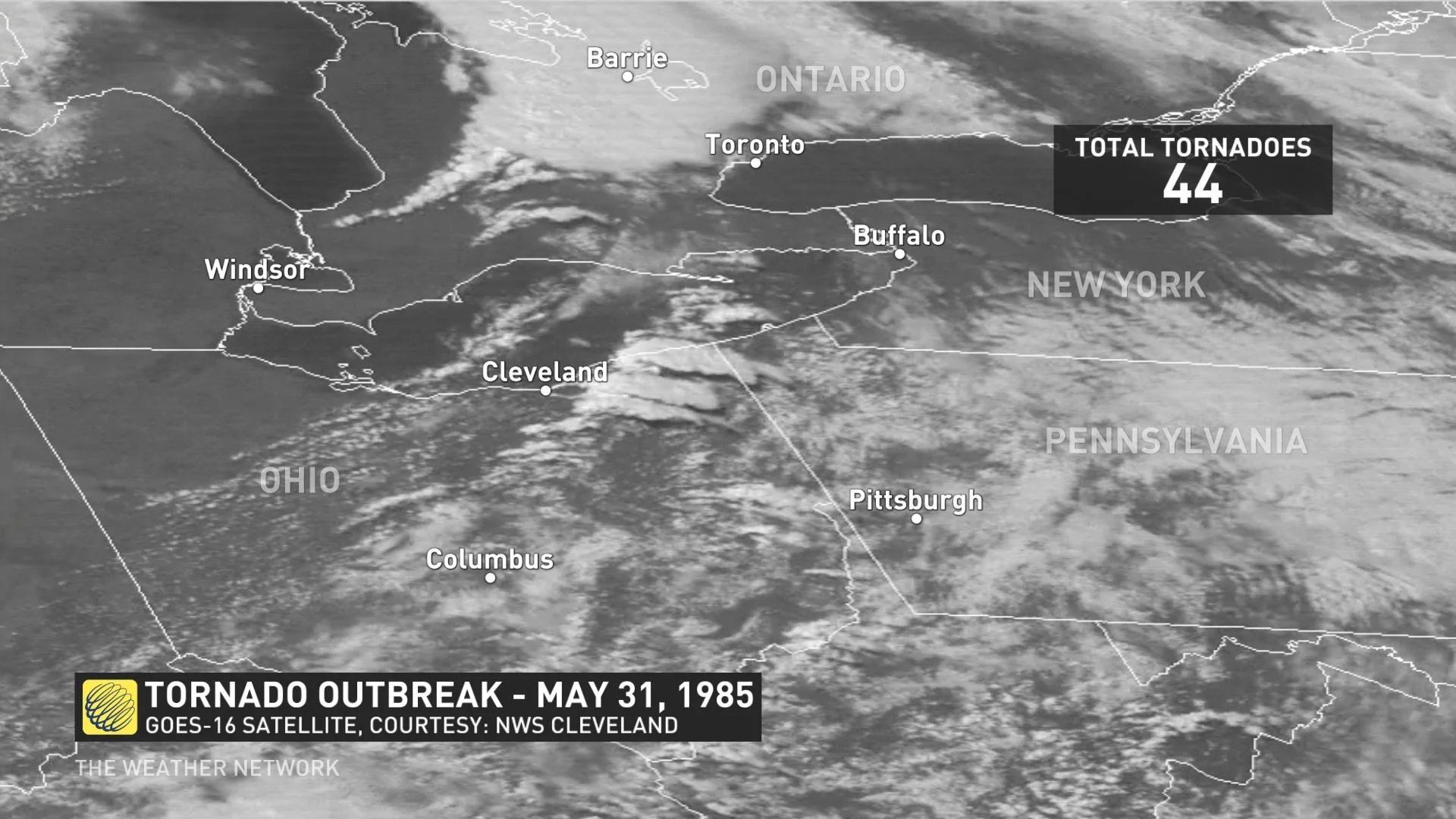
GOES-16 satellite imagery of the May 31, 1985 outbreak (National Weather Service (NWS) Cleveland)
However, the July 15, 2021 setup showed some similar characteristics as there was an upper level trough over the Great Lakes basin and a surface low just north of Georgian Bay, Rousseau added.
"But both yesterday were much weaker than what happened in 1985. Because of this, wind shear and instability were weaker, but still sufficient to produce a significant tornado," said Rousseau.
Since 1985, there has been significant improvement with how tornadoes are rated. Prior to April 2013, tornado damage in Canada was rated on the Fujita (F) scale, so the 1985 twister was rated F4. The Enhanced Fujita (EF) scale was adopted on April 1, 2013, so Thursday's twister was rated EF-2.
"I would say EF-4 and F4 ratings are fairly similar. You would perhaps see less EF-3+ tornadoes today simply based on better house construction. But hypothetically speaking, if [Thursday's] tornado was rated EF-4 it would be comparable to the 1985 event," said Rousseau. "Actually, it would likely have been much worse given how built up Barrie is now."
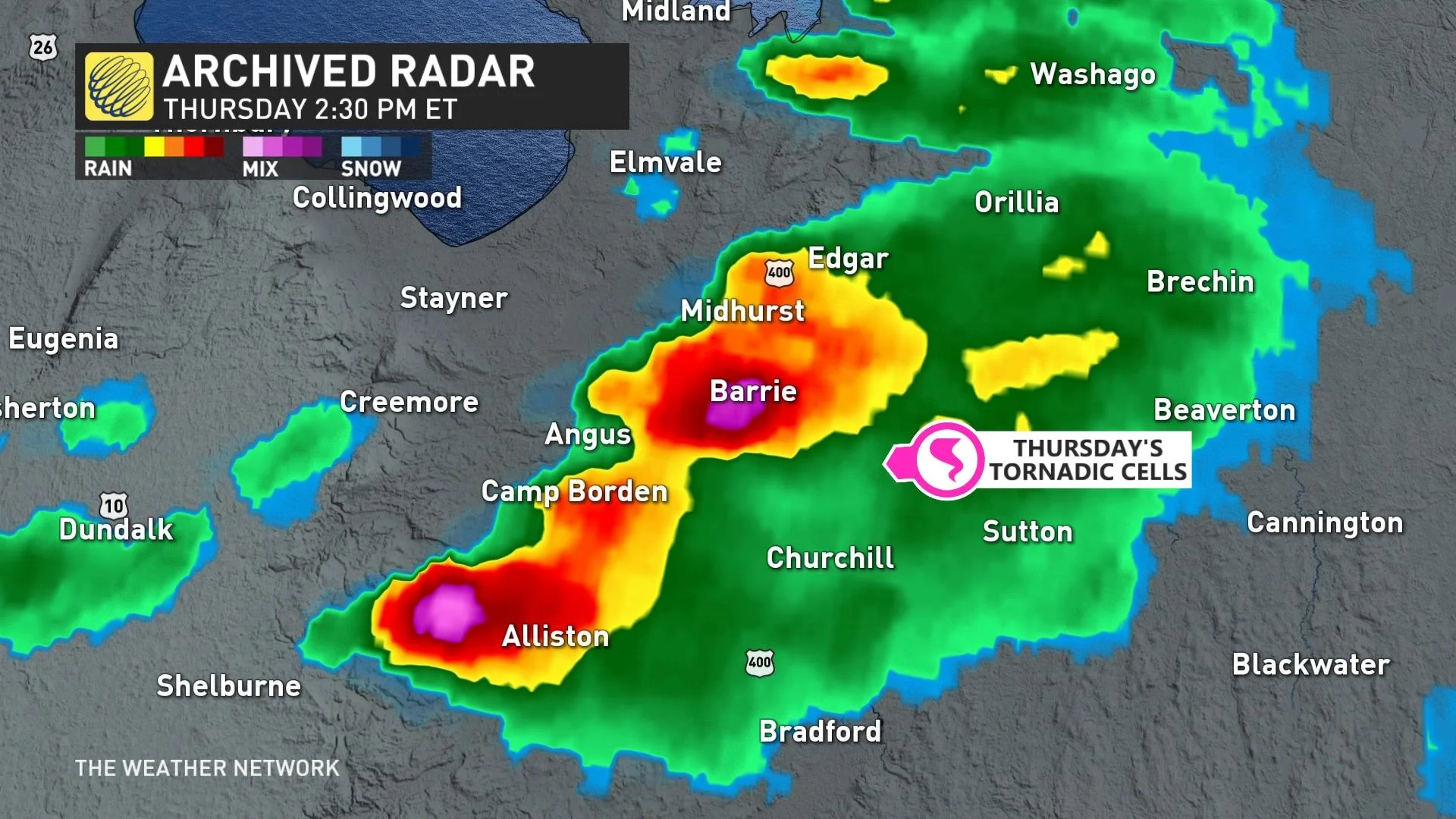
Rousseau said as "awful as [Thursday] was," hopefully it will serve as a good reminder that Ontario is due for another big event.
"We've dodged a lot of bullets in that regard. But if you take the Woodstock, Ont., tornado from 1979, for example, and have that happen now...it would be catastrophic, same with the Edmonton tornado from 1987. And with [what happened Thursday], had that gotten to EF-4 strength, it would have been devastating," said Rousseau.
Thumbnail credits: Barrie police (1985 damage), Francis Lavigne-Theriault/Northern Tornadoes Project (2021 damage).
With files from Randi Mann.
Find Nathan Howes on Twitter.










